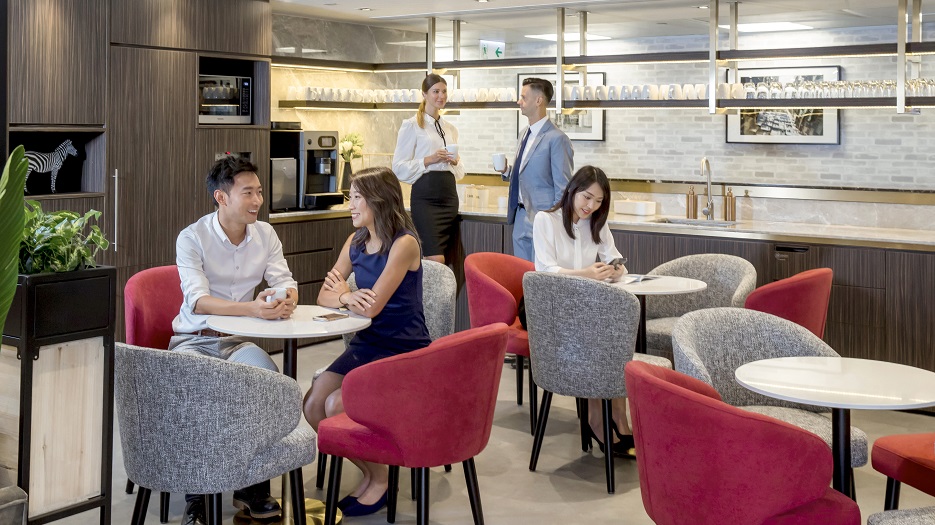5 Key Trends in the Flex Office Industry for 2024 and Beyond

Flexible workspaces have undergone quite a transformation in recent years; going from spaces used by freelancers, independent professionals and entrepreneurs to an integral component of the modern corporate landscape. The surge in their popularity is multifaceted, driven by factors such as cost-efficiency, adaptability, employee well-being, technological advancements, and the impact of the global pandemic on the way we work. As businesses navigate all of these changes at once, flexible and efficient workspaces have become a cornerstone for corporate development.
According to market research firm Spherical Insights, the global market size of flexible working spaces is expected to reach USD 132.67 Billion by 2032, up from USD 43.23 Billion in 2022, proving that this industry has nowhere to go but up. Plus, with large flexible office space providers enjoying record profits in 2023, it’s clear that 2024 is going to be another big year for the industry. The demand for flexible office solutions has not only been spurred by the rise of remote work but has also reflected a fundamental shift in how businesses perceive and approach their workspace requirements.
Demand for the Flex Space Market in Recent Years
As of 2023, the demand for flexible office spaces has soared, and customers have become more diverse than ever. From small companies that want a base for their growing business, freelancers who need a desk to work on their projects or large corporate occupiers who want a separate space for project teams to come together, there are a lot of different people making use of flexible office space.
Interestingly, large companies are investing in flexible working space. According to Savilles, the number of enquiries from businesses looking for more than 100 desks has risen by 50% YoY compared to the kinds of levels we were seeing before the pandemic.
This also comes at a time when a JLL report suggested that the flexible workspace industry could take up as much as 30% of all office space by 2030, a clear signal that these types of workspace are going to become a priority for many businesses over the next few years. The flexibility offered by these workspaces enables companies to scale their operations seamlessly and retain alignment with the ever-changing nature of the modern business landscape.
With remote work becoming more commonplace, organisations are exploring hybrid models that combine office-based work with remote flexibility. This shift has created a substantial demand for flexible workspace providers capable of catering to these evolving needs. The surge in demand is not only a response to external factors such as the pandemic but also suggests that many businesses are completely rethinking the way they operate.
Trends anticipated to shape the flexible workspace industry in 2024 and beyond
The flexible workspace industry looks very different to how it was just a few years ago, and we expect it to change even more in the coming years.
After looking back on our predictions from 2023, here are some of the key trends that will influence the industry in 2024 and beyond.
Emphasis on Wellness in The Flexible Office
One prominent trend, identified by Deloitte, suggests that a continued emphasis on employee well-being will shape the design and amenities of flexible workspaces. If people are spending most of their time in these spaces, they should be designed in a way that makes them feel motivated and productive.
To boost the wellness of people working in shared spaces, integrating elements such as green spaces, natural lighting, and wellness programmess is important. These are already things that businesses should be doing to attract and retain top talent, but shared workspaces should also think about how they can offer these amenities to attract large corporations to pay for their space.
As more companies realise that the link between employee well-being and productivity is strong, these wellness-centric spaces are estimated to be at the forefront of workspace design.
Tech-Driven Customisation
The integration of technology for personalised user experiences is set to gain momentum over the next few years, but we’re really going to start seeing it take shape in 2024. McKinsey is already saying that personalisation would be the main driver of success in the next few years, and if flexible workspaces can adopt it early, it will put them in a great place.
From smart office applications to AI-driven workspace customisation, technology is predicted to play a central role in enhancing the functionality and overall user experience within flexible workspaces.
Businesses are already looking into ways that they can optimise their operations. In this regard, flexible office spaces offer businesses an array of workspace solutions. For instance, flex workspace operators, like Compass Offices, can provide IT services, such as enterprise-grade IT infrastructure and conference equipment, to satisfy diverse needs of businesses.
Rise of Niche and Industry-specific Spaces in Short Term Office Space
Shared workspaces were designed to cater for a broad array of businesses, but we speculate there to be a rise in industry-specific workspaces popping up.
This new trend suggests that there is a demand for specialised environments that cater to the unique requirements of diverse sectors. By designing these niche spaces for specific industries, flexible workspaces can help foster collaboration and create an environment conducive to industry-specific innovation.
For example, you could have creative hubs for the arts and tech-centric spaces for startups. Whatever the industry is, the flexible workspace landscape is expected to diversify to accommodate varied professional needs when offering short term office for rent.
Sustainability in Design and Operations
With an increasing focus on the environmental impact humans have on the planet, sustainable practices will become integral to flexible workspace design and operations.
This is a trend that is going to be affecting all industries in 2024 as many countries have already signed to reach net zero in the near future. As different countries race to keep on track, it will also fall onto businesses to do their bit for the environment – including flexible office spaces.
It’s important for flexible workspace providers to focus on eco-friendly initiatives, energy efficiency, and reduced environmental impact. This can be done by rethinking the design of spaces, fitting energy-efficient systems to control heating, water and others, and encouraging customers to make eco-friendly options – like using reusable cups, going paperless, or turning off the lights once they’ve finished using the space.
As more people get more interested in sustainability, flexible workspaces that incorporate green design and operational practices are likely to gain traction.
Tenants Want More Flexibility From Their Office Space
In recent years, one of the main changes that Savills has seen is the greater need for flexibility in office spaces. More occupiers want flexible lease terms so they have more control over when and how they work in these shared spaces – which is aligned with the changing ways different businesses approach hybrid work and evaluate their spatial requirements.
Ultimately, businesses want to save money wherever they can, whether it’s a long or short term office rental. Using flexible workspaces they can use hot-desking and only pay for the space that their employees use. As they work with their employees to decide how much time they are going to spend in the office, in shared workspaces, or at home, it can be a huge drawback to have a strict lease in place.
Conclusion
The flexible workspace industry is expected to continue growing in 2024 and will become much more widely used by a range of businesses.
Over the next few years, we expect wellness, tech customisation, and flexibility to be some of the key drivers within the industry. Whatever happens, the future of the flexible office space, which encompasses the elements of agility and functionality, is anticipated to be promising in the days ahead.





